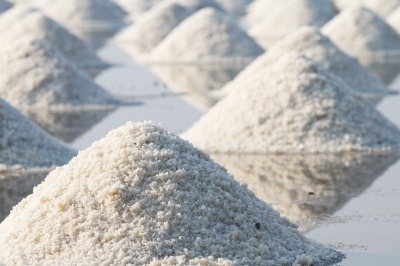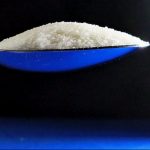
High sodium or salt consumption is a major contributor to high blood pressure or hypertension (Buemi et al., 2012), which is a leading cause of stroke, coronary heart diseases, heart attack, and kidney failure according to the Centers For Disease Control & Prevention in the USA (2013).
Salt reduction is an important step on the road to meeting targets for reducing hypertension but it also presents challenges to a food industry used to adding salt for many reasons. It has a number of technical and sensory functions in food. It provides a delicious and delectable savoury note to most foods and acts as a traditional stabiliser. No wonder given its abundance, availability and low cost that it is a great flavour enhancer in the food industry.
Salt (sodium chloride) is an essential nutrient on a daily basis. It’s an electrolyte currently with well-defined and established intake and upper limit levels. We might think of salt as sodium chloride but it can also cover potassium chloride and other forms of sodium too. Delving into how salt is defined by public health organisations is important if the correct message is to be broadcast. Along with sodium, potassium, calcium and magnesium, are all essential to maintaining electrolyte balance and ultimately cardiovascular health.
Salt In Product Development
Salt is an important preservative and at high enough levels will only allow salt-tolerant micro-organisms to survive. As a preservative, it is often added to fish and meat, pickles and sauces to 5 to 20% w/w. It is a key factor in hurdle technology where only 3 to 6% salt is required along with other hurdles such as reduced temperature, addition of food acids etc. It also helps to extend shelf-life considerably (Albarracin et al., 2011). Secondly, taste and texture – salt is highly persistent in sensory terms and alters the perception of other flavours especially savoury sensations and masking bitter flavours. In a combination of both factors mentioned, food manufacturers have relied on salt to provide safe food with an agreeable flavour. In most countries, about 75% of our daily salt intake is obtained from a processed food with the remainder added by the consumer.
We all have different perceptions of saltiness and changes with age and habit. Our preference for salt is not inherited but the environment certainly has a marked impact on how much salt we enjoy. We also develop our preferences based on the type of food eaten.
A number of bodies and pressure groups are encouraging food manufacturers to look at ways of reducing salt in products. The call to reduce salt intake though has been with us for many years. Those companies producing processed foods have long been targeted – they do after all supply the majority of all our dietary salt if we consume these products. Those same manufacturers using salt have led the way in reducing its content by offering alternatives within their product ranges over many years.
The Role Of Government And NGOs In Advocating Salt Reduction In the Diet.
The World Health Organisation, on the basis of a thorough investigation recommended that salt intake on a daily basis needed to be below 5g. This was an immediate goal for every adult world-wide. In 2012, the Food Standards Agency (FSA) set new targets for salt levels. Using information provided by Leatherhead Food Research, reports on salt reduction technologies from the Food & Drink Federation (FDF) and British Retail Consortium (BRC) have been published. World Action on Salt & Health (WASH) has monitored activity over the last ten years and found the salt level of packaged bread has reduced by 20%. The Food & Drug Administration (FDA) too is proposing quite radically to revise nutrition facts labels. These appear some of the most restrictive limits yet but many public health organizations are keenly supporting there proposed policy.
One important strategy for salt reduction is simply to reduce the amount added to food because a gradual reduction over time allows the consumer to become attuned to reduced saltiness. Consuming less salt or moderating its intake can help us educate our taste buds such that we need less use of the salt cellar. A consequence of reducing the salt content of foods is to drastically alter our perception of their taste.
One of the key diets which focuses on reducing sodium in particular is the DASH diet which looks at ways to reduce hypertension (blood pressure).
Strategies to overcome loss of salt perception have revolved around the addition of masking flavours and aromas to products. Another approach is to simply modify the food structure which can also alter the perception of saltiness (Busch et al., 2013). Even with the development of masking ingredients, the original taste of a salt-laden food is difficult to mimic. Inert fillers that concentrate the salt in the aqueous phase along with creating non-homogenous distributions of salt help to create perceptions of saltiness without it being present throughout the body of the product. Spraying microcrystals of salt onto the surface of the snack product, relying on the initial hit of persistent saltiness has been one strategy so that the body of the food is developed with a lower salt content. Potassium chloride has also been substituted for sodium chloride, restructured salt crystals and flavours to enhance umami have also been tried and tested.
Where liquids such as sauces and gravies are concerned, modifying the physical attributes by using thickeners to alter viscosity can alter salt distribution in the mouth.
One other well tried and tested method is to add ingredients which raise the perception of ‘umami’. Whilst it has other health connotations, monosodium glutamate (MSG) and inosine 5′- monophosphate (IMP) has often been added to improve palatability.
The European Union has financed a number or projects to identify how salt reduction can be achieved without loss of sensory impact. One such project, TeRiFiQ set out to combine a variety of technologies for salt, sugar and fat reduction but still maintaining the basic nutrition and sensory quality of the food. Starting in 2015, the project’s manufacturing partners will begin investigation of the new ideas in finished goods.
I recommend an excellent presentation on how these challenges can be met, written by Prof. Ray Winger at Massey University, New Zealand.
Presentation on salt reduction: Winger, R. The rationale for and challenges of reducing salt in foods. www.cuisineforme.co.uk/pdfs/salt%20reduction%20website.pdf Accessed 22nd October 2013.
Post -revised 15th August 2014 based on additional information relating to WHO guidelines.
References
Albarracin, W., Sanchez, I.C., Grau, R., Barat, J.M. (2011) Salt in food processing; usage and reduction: a review. Intl. J. Food Sci. Technol. 46(7) pp. 1329–36
Buemi, M., Senatore, M., Corica, F., Aloisi, C., Romeo, A., Tramontana, D., Frisina, N. (2002) Diet and arterial hypertension: is the sodium ion alone important? Med. Res. Rev. 22(4) pp. 419–28.
, , . (2013). Sodium reduction: optimizing product composition and structure toward increasing saltiness perception. Trends Food Sci Technol 29(1) pp. 21–34.
[CDC]. Centers for Disease Control and Prevention. 2013. Division for heart disease and stroke prevention. Available from: https://www.cdc.gov/dhdsp/programs/sodium_reduction.htm. Accessed June 14, 2014.



Leave a Reply